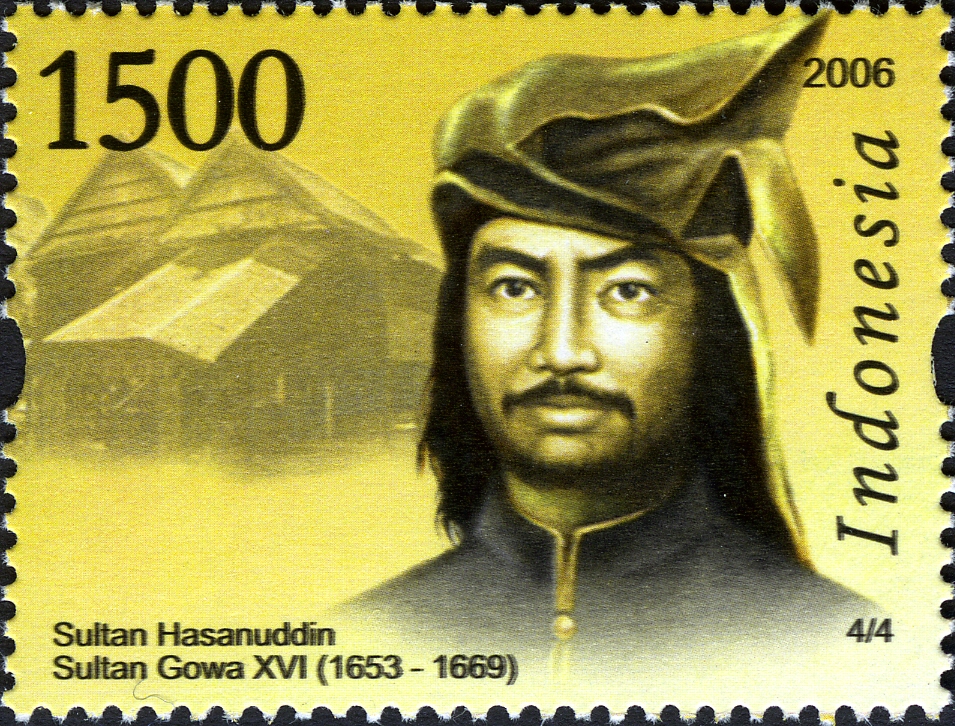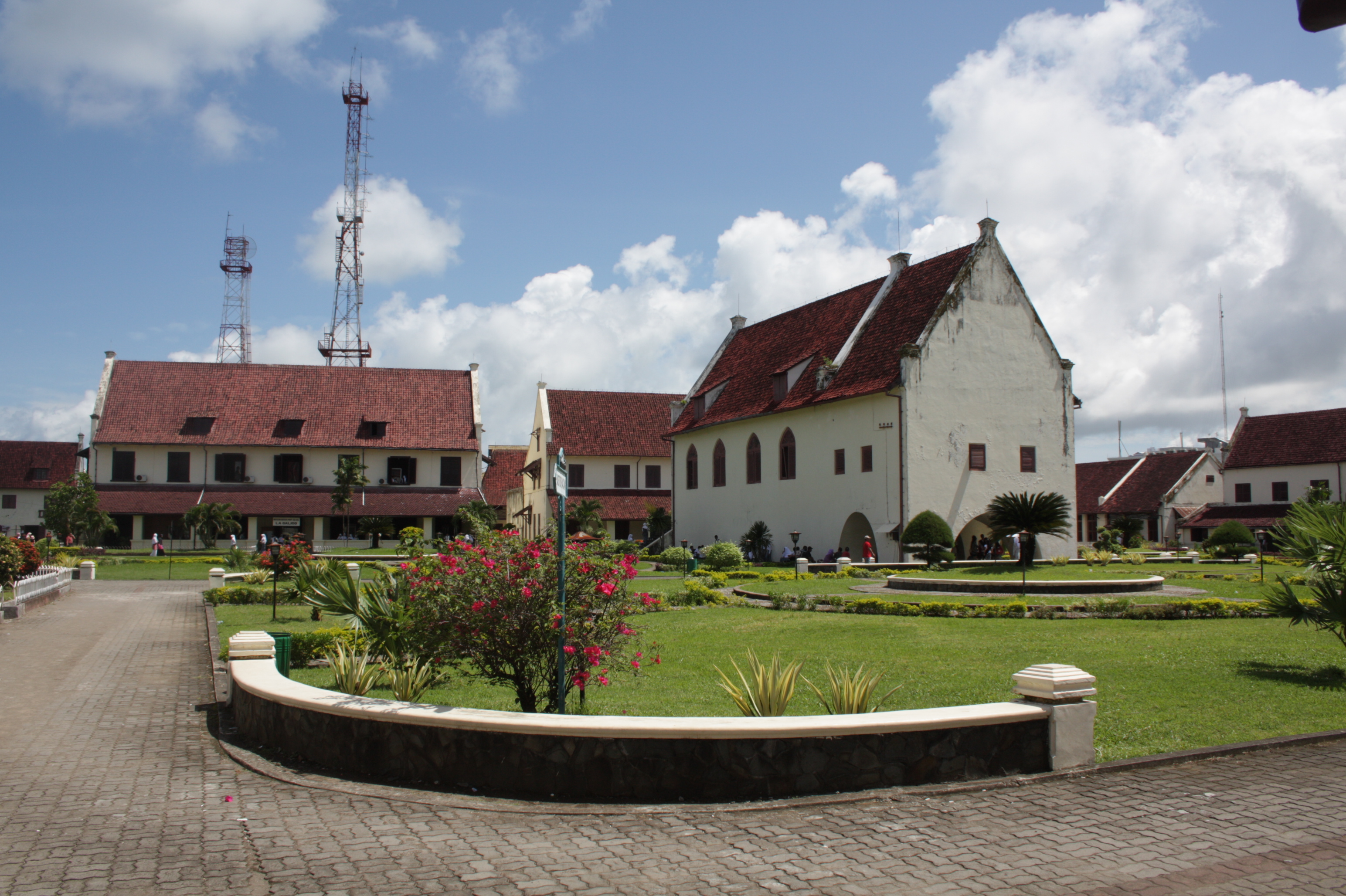|
Makasar, Jakarta
Makasar is a district (''kecamatan'') of East Jakarta, Indonesia. It had an area of 21.85 km2 and population of 185,830 at the 2010 Census; the latest official estimate (for mid 2019) is 204,595. The boundaries of Makasar District are Kali Malang channel to the north, Sunter River to the east, Jagorawi Toll Road to the west, and Taman Mini 2 – Pondok Gede Raya Road to the south. The Taman Mini Indonesia Indah area is located in Cipayung District (Setu Administrative Village), but the museum complex of Purna Bhakti Pertiwi, a museum also located in Taman Mini Indonesia Indah, is located in Makasar District (Pinang Ranti Administrative Village). Kampung Makasar Kampung Makasar is an area that is located in Makasar Administrative Village and part of Kebon Pala Administrative Village (Kramat Jati District). The area is known as "Kampung Makasar" (Makasar Village) because it was used as a settlement for people from Makasar, under the leadership of Captain Daeng Matara in 1686. ... [...More Info...] [...Related Items...] OR: [Wikipedia] [Google] [Baidu] |
Districts Of Indonesia
The term ''district'', in the context of Indonesia, refers to the third-level Subdivisions of Indonesia, administrative subdivision, below Regency (Indonesia), regency or City status in Indonesia, city. The local term ' is used in the majority of Indonesian areas, except in Papua (province), Papua, West Papua (province), West Papua, and the Special Region of Yogyakarta. The term ' is used in Papua and West Papua. In the Special Region of Yogyakarta, the term ''kapanewon'' is used for districts within the regencies, while the term ' is used for districts within Yogyakarta, the province's only city. According to Statistics Indonesia, there are a total of 7,252 districts in Indonesia as at 2019, subdivided into 83,820 administrative villages (rural ' and urban '). During the Dutch East Indies and early republic period, the term ''district'' referred to ''kewedanan'', a subdivision of regency, while ' was translated as ''subdistrict'' ( nl, onderdistrict). Following the abolition of '' ... [...More Info...] [...Related Items...] OR: [Wikipedia] [Google] [Baidu] |
Batavia, Dutch East Indies
Batavia was the capital of the Dutch East Indies. The area corresponds to present-day Jakarta, Indonesia. Batavia can refer to the city proper or its suburbs and hinterland, the Ommelanden, which included the much-larger area of the Residency of Batavia in the present-day Indonesian provinces of Jakarta, Banten and West Java. The founding of Batavia by the Dutch in 1619, on the site of the ruins of Jayakarta, led to the establishment of a Dutch colony; Batavia became the center of the Dutch East India Company's trading network in Asia. Monopolies on local produce were augmented by non-indigenous cash crops. To safeguard their commercial interests, the company and the colonial administration absorbed surrounding territory. Batavia is on the north coast of Java, in a sheltered bay, on a land of marshland and hills crisscrossed with canals. The city had two centers: Oud Batavia (the oldest part of the city) and the relatively-newer city, on higher ground to the south. It was ... [...More Info...] [...Related Items...] OR: [Wikipedia] [Google] [Baidu] |
Halim Perdanakusuma International Airport
Halim Perdanakusuma International Airport ( id, Bandar Udara Internasional Halim Perdanakusuma) is an international airport in Jakarta, Indonesia. The airport is located in East Jakarta and the airfield is conjoined with the Halim Perdanakusuma air force base of the Indonesian Air Force. Aside from commercial scheduled flights, this airport is also used for military, private and presidential purposes. The airport is used for corporate aviation with frequent arrivals and departures of corporate aircraft both domestically and internationally. About 5.6 million passengers used the airport in 2016. History This airport takes its name from Air Vice-Marshal Halim Perdanakusuma, an Indonesian aviator. It is now home to a large number of turboprop, charter, and general aviation companies. It is a major air force base of the Indonesian Air Force and is home to most of its major squadrons, such as the 31st Squadron and the 17th VIP Squadron. In the 1960s, it was also known as the Halim ... [...More Info...] [...Related Items...] OR: [Wikipedia] [Google] [Baidu] |
Purna Bhakti Pertiwi Museum
The Purna Bhakti Pertiwi Museum, is a history museum specialized on the life of Suharto, the former second president of Indonesia and a powerful political figure in modern Indonesian history. It is located in Taman Mini Indonesia Indah (TMII), Jakarta, Indonesia. The museum houses and displays the large amount of Suharto's collections; mostly valuable objects, artworks and souvenirs, received from various world leaders and Indonesian people, accumulated during the 32 years of his administration in Indonesia. The museum is a modern building designed with the shapes of tumpeng, a traditional Javanese people, Javanese cone-shaped rice dish which symbolizes gratitude. History Purna Bhakti Pertiwi Museum was built on the initiative of Madame Tien Suharto, as an expression of gratitude to God Almighty and high appreciation in honor of Indonesian and international community for their attention and support for Suharto. It was built by Purna Bhakti Pertiwi Foundation for 5 years between 198 ... [...More Info...] [...Related Items...] OR: [Wikipedia] [Google] [Baidu] |
Villages Of Indonesia
In Indonesia, village or subdistrict is the fourth-level subdivision below a district, regency/city, and province. There are a number of names and types for villages in Indonesia, with ''desa'' (rural village) being the most frequently used for regencies and ''kelurahan'' (urban village) for cities. According to the 2019 report by the Ministry of Home Affairs, there are 8,488 urban villages and 74,953 rural villages in Indonesia. Types of villages ''Kelurahan'' ''Kelurahan'' is an urban village terminology primarily used in cities, but also tiny parts of regencies. It is commonly translated to English as subdistrict. The leader of ''kelurahan'' is called ''lurah''. A ''lurah'' is a civil servant appointed by the district head. According to the Regulation of the Minister of Home Affairs Number 31 of 2006, a ''kelurahan'' can be created with the following criteria: *Java and Bali: having at least 4,500 residents or 900 families within an area of at least 3 km2. *Sumatra and Su ... [...More Info...] [...Related Items...] OR: [Wikipedia] [Google] [Baidu] |
Sultan Hasanuddin
Sultan Hasanuddin (Sultan Hasanuddin Tumenanga Ri Balla Pangkana; (12 January 1631 – 12 June 1670) was the 16th Ruler of The Sultanate of Gowa as Sombaya Ri Gowa XVI from 1653 to 1669. He was proclaimed as Indonesian National Hero on 6 November 1973.PERANGINANGIN, Marlon dkk; ''Buku Pintar Pahlawan Nasional''. Batam: Scientific Press, 2007. The Dutch called Sultan Hasanuddin "the Rooster of the East" as he was described as aggressive in battle. Early life Sultan Hasanuddin was born in Makassar, Gowa Kingdom (on what is now part of South Sulawesi) under the name ''I Mallombasi Daeng Mattawang Muhammad Baqir Karaengta Bonto Mangape Sultan Hasanuddin'', as the name of the giving of Qadi Islam Sultanate of Gowa namely Sayyid Syaikh Jalaludin bin Muhammad (Ahmad) Bafaqih Al-Aidid, a mursyid of Baharunnur Baalwy in South Sulawesi as well as teacher tarekat of Sheikh Yusuf and Sultan Hasanuddin. He was the second prince of the 15th King of Gowa, Sultan Malikussaid who died on No ... [...More Info...] [...Related Items...] OR: [Wikipedia] [Google] [Baidu] |
Gowa Sultanate
The Sultanate of Gowa (sometimes written as ''Goa''; not to be confused with Goa in India) was one of the great kingdoms in the history of Indonesia and the most successful kingdom in the South Sulawesi region. People of this kingdom come from the Makassar tribe who lived in the south end and the west coast of southern Sulawesi. History Before the establishment of the kingdom, the region had been known as ''Makassar'' and its people as ''Suku Makassar'' ( tribe of Makassar). The history of the kingdom can be divided into two eras: pre-Islamic kingdom and post-Islamic sultanate. Pre-Islamic Kingdom According to the epic poem The Nagarakretagama, in praise of King Rajasanagara of Majapahit, it lists Makassar as one of the kingdom's tributaries in 1365. The first queen of Gowa was ''Tomanurung Baine''. There is not much known about the exact time when the kingdom was established nor about the first queen, and only during the ruling of the 6th king, ''Tonatangka Kopi'', local ... [...More Info...] [...Related Items...] OR: [Wikipedia] [Google] [Baidu] |
War Prisoners
A prisoner of war (POW) is a person who is held captive by a belligerent power during or immediately after an armed conflict. The earliest recorded usage of the phrase "prisoner of war" dates back to 1610. Belligerents hold prisoners of war in custody for a range of legitimate and illegitimate reasons, such as isolating them from the enemy combatants still in the field (releasing and repatriating them in an orderly manner after hostilities), demonstrating military victory, punishing them, prosecuting them for war crimes, exploiting them for their labour, recruiting or even conscripting them as their own combatants, collecting military and political intelligence from them, or indoctrinating them in new political or religious beliefs. Ancient times For most of human history, depending on the culture of the victors, enemy fighters on the losing side in a battle who had surrendered and been taken as prisoners of war could expect to be either slaughtered or enslaved. E ... [...More Info...] [...Related Items...] OR: [Wikipedia] [Google] [Baidu] |
East Jakarta
) in Taman Mini Indonesia Indah (TMII), Jatinegara railway station and Museum of Transportation at Taman Mini Indonesia Indah. , image_seal = Lambang Kota Jakarta Timur.png , motto = , image_map = Jakarta_timur.png , map_alt = , map_caption = , coordinates = , coordinates_footnotes = , subdivision_type = Country , subdivision_name = , subdivision_type1 = Province , subdivision_type2 = , subdivision_name1 = Jakarta , subdivision_name2 = , government_footnotes = , leader_title = Mayor , leader_name = Muhammad Anwar , leader_title1 = Vice Mayor , leader_name1 = Hendra Hidayat , area_magnitude = , area_total_km2 ... [...More Info...] [...Related Items...] OR: [Wikipedia] [Google] [Baidu] |
Makasar
Makassar (, mak, ᨆᨀᨔᨑ, Mangkasara’, ) is the capital of the Indonesian province of South Sulawesi. It is the largest city in the region of Eastern Indonesia and the country's fifth-largest urban center after Jakarta, Surabaya, Medan, and Bandung.Ministry of Internal AffairsRegistration Book for Area Code and Data of 2013/ref> The city is located on the southwest coast of the island of Sulawesi, facing the Makassar Strait. Throughout its history, Makassar has been an important trading port, hosting the center of the Gowa Sultanate and a Portuguese naval base before its conquest by the Dutch East India Company in the 17th century. It remained an important port in the Dutch East Indies, serving Eastern Indonesian regions with Makassarese fishers going as far south as the Australian coast. For a brief period after Indonesian independence, Makassar became the capital of the State of East Indonesia, during which an uprising occurred. The city's area is , and it had a p ... [...More Info...] [...Related Items...] OR: [Wikipedia] [Google] [Baidu] |
Kramat Jati
Kramat Jati is a district (''kecamatan'') of East Jakarta, Indonesia. The boundaries of Kramat Jati are Jagorawi Toll Road to the east, Ciliwung to the west, and Jakarta-Cikampek Tollway to the north. The Condet Area, known for its Betawi culture and agriculture, is located in Kramat Jati. Condet Condet is an area in Kramat Jati which is roughly located in three kelurahan: Batu Ampar, Bale Kambang, and Kampung Tengah. The area is known for its fruit production and a small enclave for Betawi people, the indigenous people of Jakarta. Before 1965 most of the land in this area was used for agriculture and fruit orchards. As Jakarta started to grow, Condet became affected by the modern development, threatening the preservation of Betawi culture within the area. The oldest written source about Condet is found in National Archives of the Republic of Indonesia. On April 25, 1716, Prince Aria Pourobaya made his will and bestowed upon his wife Ratoe Pourobaya "...ten big buffaloes walking ... [...More Info...] [...Related Items...] OR: [Wikipedia] [Google] [Baidu] |







